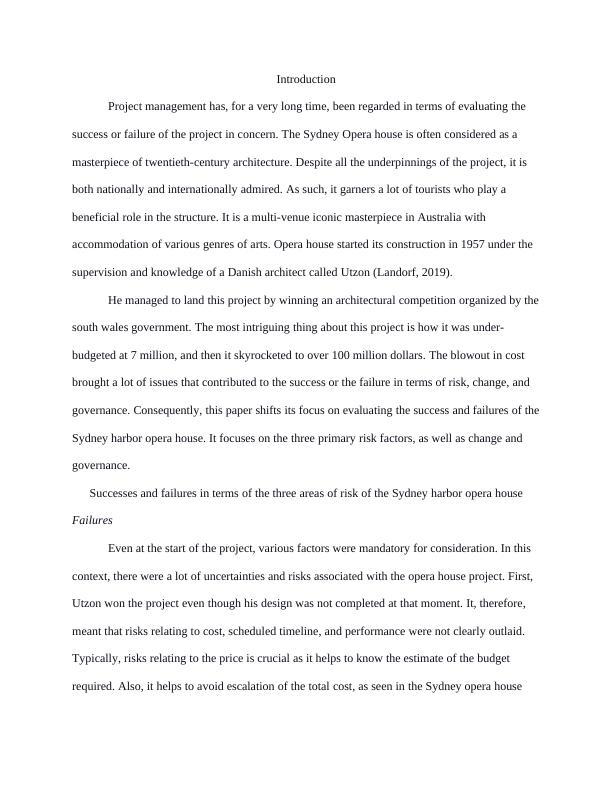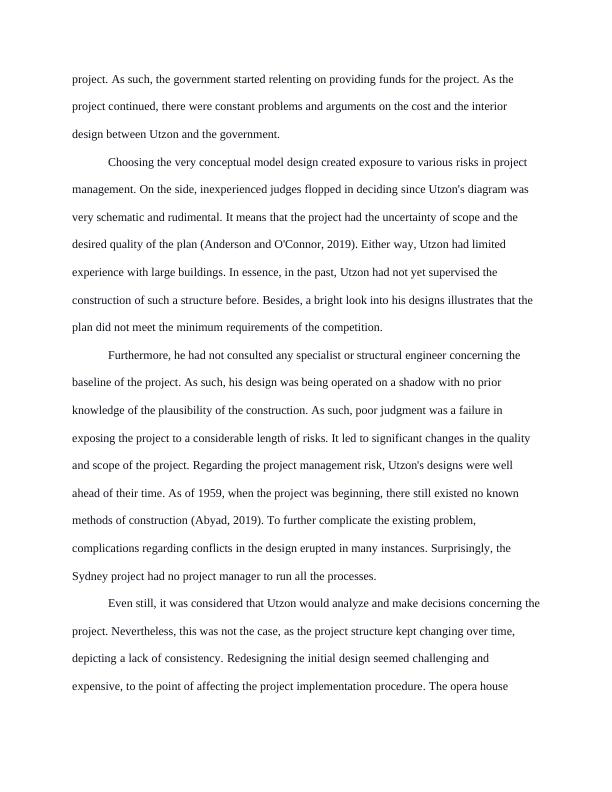Ask a question from expert
Project Management 10 Project Management of the Sydney Harbour Opera House
13 Pages3840 Words113 Views
Added on 2021-10-09
About This Document
Project Management 10 PROJECT MANAGEMENT OF THE SYDNEY HARBOUR OPERA HOUSE by Student’s name Course code+name Professor’s name University name City, State Date of submission Introduction Project management has, for a very long time, been regarded in terms of evaluating the success or failure of the project in concern. The blowout in cost brought a lot of issues that contributed to the success or the failure in terms of risk, change, and governance. Successes and failures in terms of the
Project Management 10 Project Management of the Sydney Harbour Opera House
Added on 2021-10-09
BookmarkShareRelated Documents
End of preview
Want to access all the pages? Upload your documents or become a member.
Construction of Sydney Opera House
|9
|2595
|59
Critical Analysis of Sydney Opera House Construction Project
|11
|3032
|213
The Sydney Opera House which is one of the most beautiful architectures
|14
|2493
|18
FAILED PROJECT ANALYSIS OF SYDNEY OPERA HOUSE.
|21
|5945
|87
Project Initiation Planning and Execution
|11
|1648
|22
Critical Analysis Report - Sydney Opera House Construction Project
|15
|4929
|473



